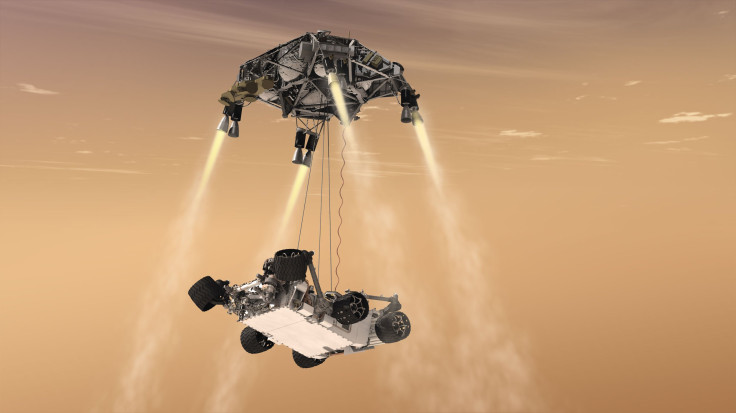Mars 2020 Mission: NASA Tests New ‘Eyes’ For Planned Mission To Red Planet

NASA announced Tuesday that it had successfully tested the Lander Vision System (LVS) — a prototype vision system that the Mars 2020 rover would be equipped with. The camera-based navigation system, capable of assessing terrains and potential hazards, would guide the spacecraft during its descent to the red planet’s surface.
During the tests, the LVS was launched 1,066 feet into the air on board an experimental rocket built by the California-based Masten Space Systems. The prototype vision system was then successfully used to guide the rocket to a precise landing at a predesignated target.
“We showed a closed loop pinpoint landing demo that eliminated any technical concerns with flying the Lander Vision System on Mars 2020,” Andrew Johnson, principal investigator in the LVS development, said in a statement.
The Mars 2020 rover, which borrows a lot of its design features from the successful Curiosity, and is currently in its final design and construction phase, differs from its predecessor in this key area. While the landing system on the Mars 2020 rover would be a lot like that on Curiosity, the LVS would give it an added precision.
“To date robotic planetary landers cannot ‘see’ hazards or landmarks for navigation. In this sense they have all landed blindly,” a 2012 abstract co-authored by Johnson said. “Landing site selection is restricted by the need to find a safe site that is also scientifically interesting. ... The LVS would increase access to scientifically rich landing sites and could be a low mass, volume and cost replacement for the Terminal Descent Sensor on Mars Science Laboratory.”
Mars, despite its inhospitable climate and heavily irradiated surface that would kill humans in a matter of minutes, has been a source of unending fascination for scientists and science fiction writers alike. In recent years, this fascination has translated into concrete plans for a manned mission to the red planet.
However, before that can be done, several key obstacles — most of them related to the present-day habitability of Mars — need to be resolved. This is where the Mars 2020 mission is expected to play a crucial role. The rover will not only look for signs of past life on the red planet, it will also, using its array of science instruments, conduct investigations into the usability and availability of Martian resources, including oxygen, to prepare for manned missions.
“Mars 2020 will carry an entirely new subsystem to collect and prepare Martian rocks and soil samples that includes a coring drill on its arm and a rack of sample tubes,” NASA said back in July. “About 30 of these sample tubes will be deposited at select locations for return on a potential future sample-retrieval mission. In laboratories on Earth, specimens from Mars could be analyzed for evidence of past life on Mars and possible health hazards for future human missions.”
So far, four rovers — Sojourner, Sprit, Opportunity and Curiosity — all sent by NASA, have successfully landed on Mars. Two — Opportunity and Curiosity — are still operational. In addition to the Mars 2020 rover, NASA also plans to send a robotic lander — InSight — to the red planet in May 2018.
© Copyright IBTimes 2025. All rights reserved.






















